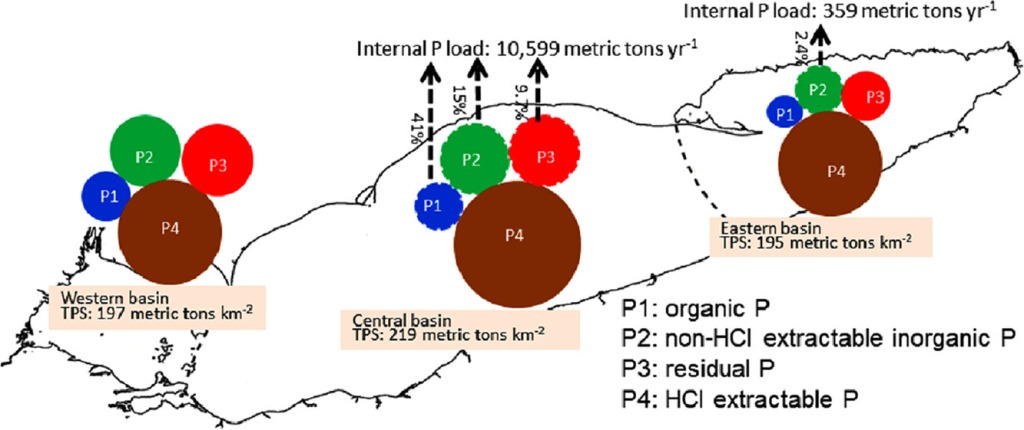
Authors
Y.T.Wang, T.Q. Zhang; Y.C. Zhao, J.J.H. Ciborowski, Y.M. Zhao, I.P. O’Halloran, Z.M. Qi, C.S. Tan
Lake Erie harmful algal blooms and hypoxia are two major environmental problems, and have severe impacts on human health, aquatic ecosystems, and the economy. However, little is known about internal loading of phosphorus (P) from sediments, which pose a challenge for assessing the efficacy of current conservation measures on the improvement of lake water quality. A modified Hedley’s extraction procedure was employed to analyze representative sediment samples collected from the Lake Erie basin for assessing sedimentary P stock, potential availability for release into lake water, and internal P loading. Inorganic and organic P in the sediments were characterized by sequential extractions in H2O, 0.5 M NaHCO3, 0.1 M NaOH, and 1.0 M HCl, respectively. In the 0 – 10 cm sediment, total P stock was 172, 191, and 170 metric tons km−2 in the western, central, and eastern basins, respectively. Sedimentary P seems unlikely to contribute to internal P loading in the western basin, while in the eastern basin it can potentially contribute to an internal loading of 359 metric tons P yr−1. In the central basin, 41% of organic P, 15% of non-HCl extractable inorganic P, and 9.7% of residual P in the 0 – 10 cm sediment is potentially available for release into lake water; in the 10 – 20 cm sediment, organic P extracted by NaHCO3 and NaOH is also partially available. The central basin potentially contributes to internal P loading at a total amount of 10,599 metric tons yr−1. Internal P loading may not contribute to HABs in the western basin, but it can cause and maintain hypoxia in the central basin and delay the recovery of lake water quality for a lengthy time period in response to external P reduction measures.
